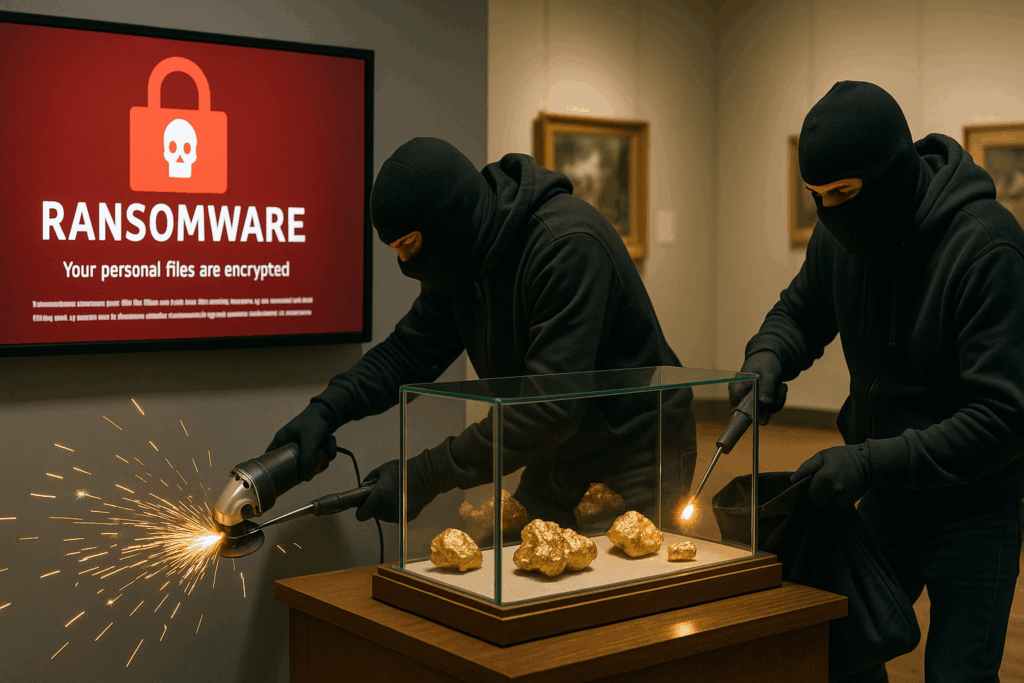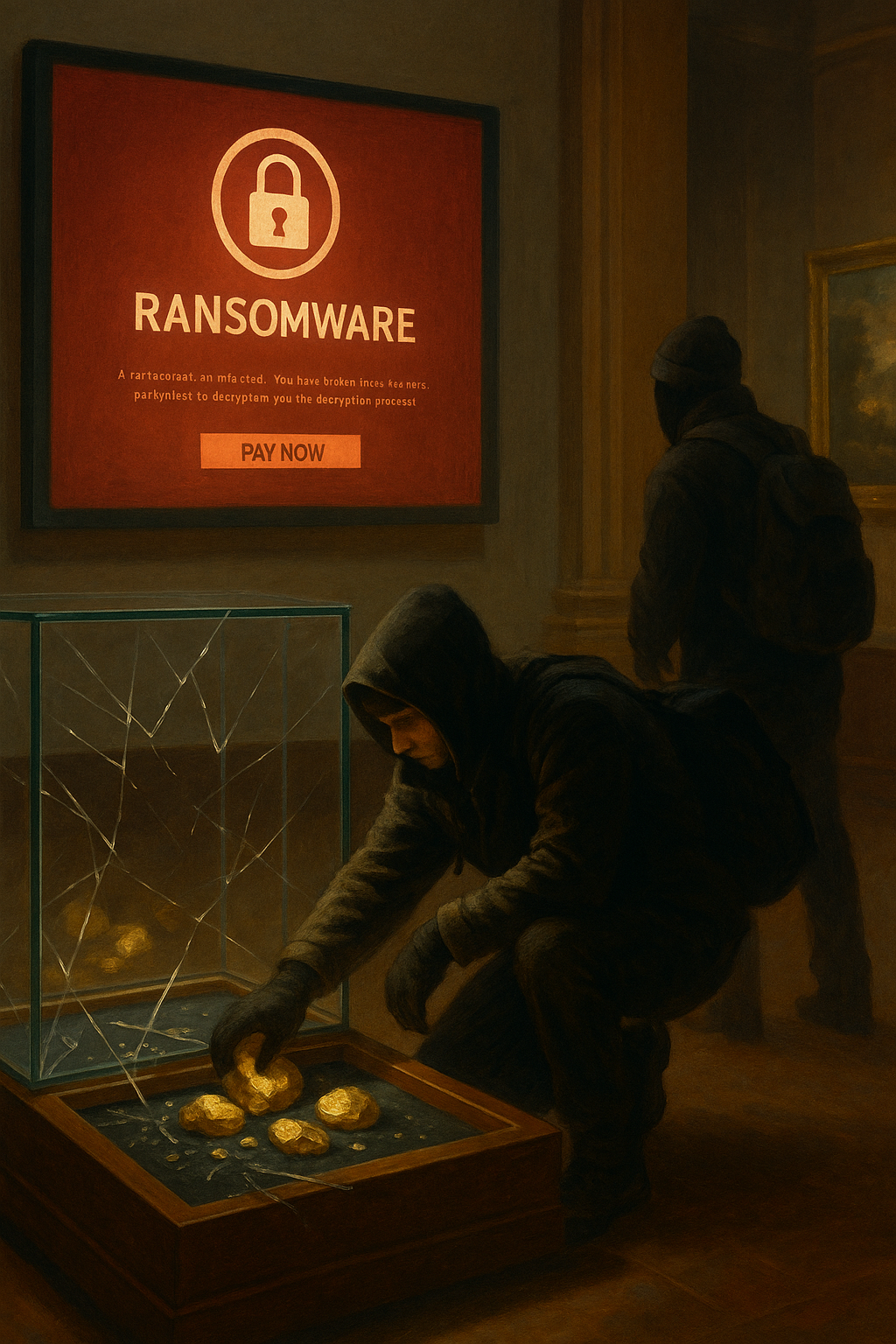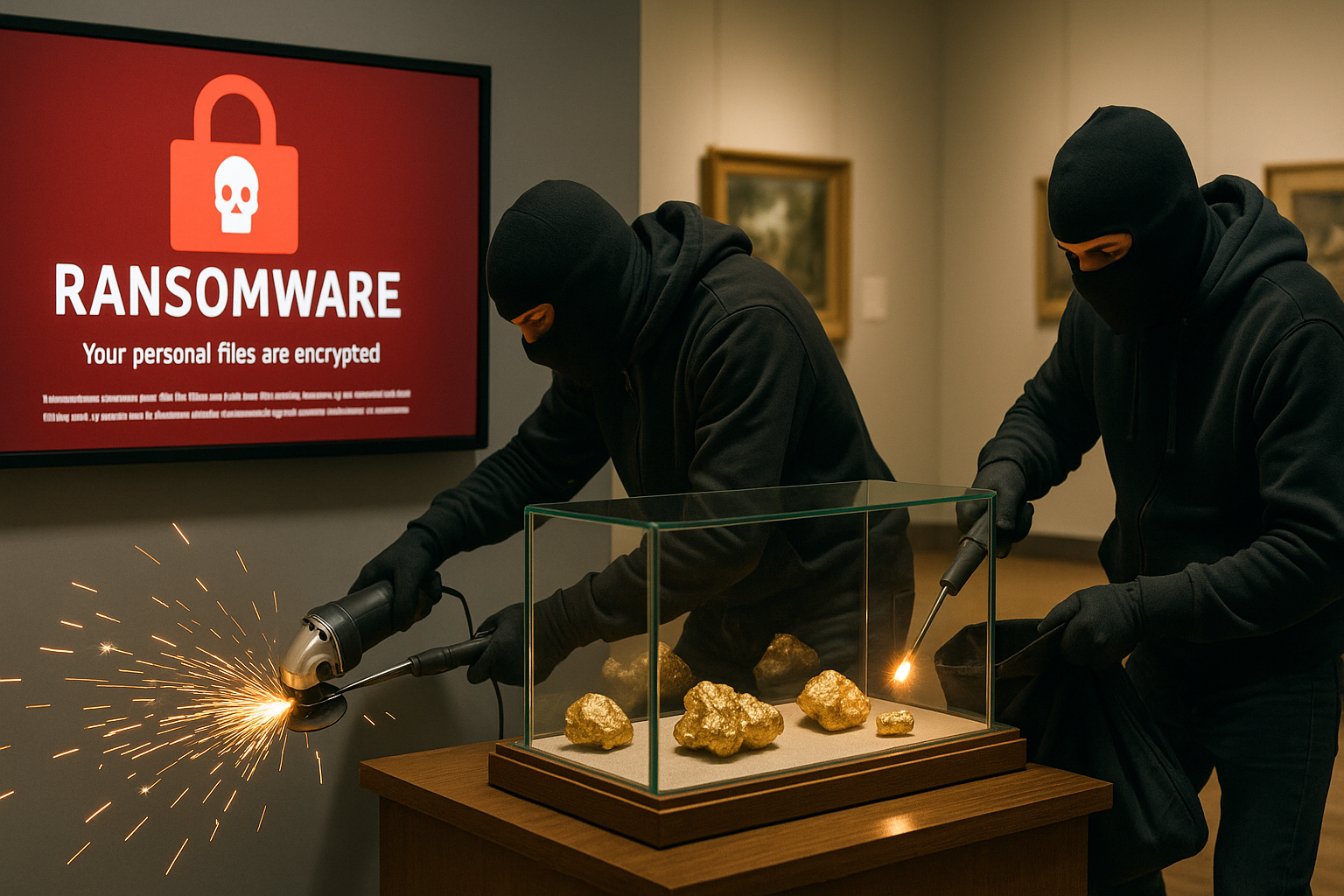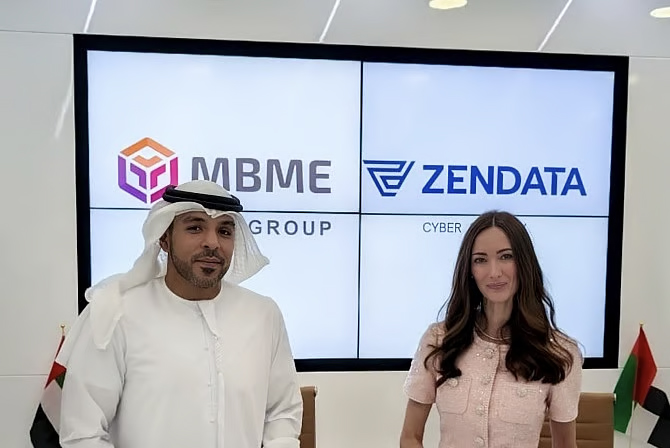Online criminals usually hunt for digital assets. But in France, the fallout of a ransomware attack opened the door, quite literally, for a 705 000 dollar gold heist.
The Natural History Museum in Paris, already reeling from a July 2025 cyberattack that crippled its systems, discovered last week that thieves had exploited the chaos. With CCTV and alarm systems disabled by ransomware, criminals cut through a door with an angle grinder, torched open a display case, and walked away with six kilograms of gold nuggets. Investigators believe the thieves knew the alarms were offline, transforming a digital breach into a physical robbery.
This incident highlights a forgotten risk: cybercrime and physical crime are converging. As organizations digitize everything from building access to surveillance, from logistics to manufacturing, a cyber incident can directly trigger real-world vulnerabilities. When systems go dark, assets, operations, and even lives may be at risk.
To counter this blended threat landscape, organizations must:
- Map dependencies and identify where physical safety relies on digital systems
- Prioritize recovery so that alarm, surveillance, and safety controls are restored first
- Plan continuity and fallback options that ensure manual or redundant measures exist for critical processes
- Validate and train with simulations that show how cyber failures can spill into the physical world
These measures cannot be improvised when an incident strikes. They must be carefully planned, tested, and rehearsed.
At ZENDATA, we help organizations prepare for exactly these scenarios, building resilience strategies where cybersecurity is not only about protecting data but about ensuring the safety and continuity of the physical world it underpins.
Find the article here





